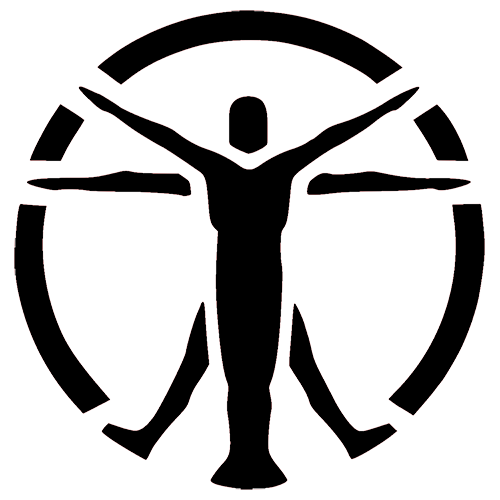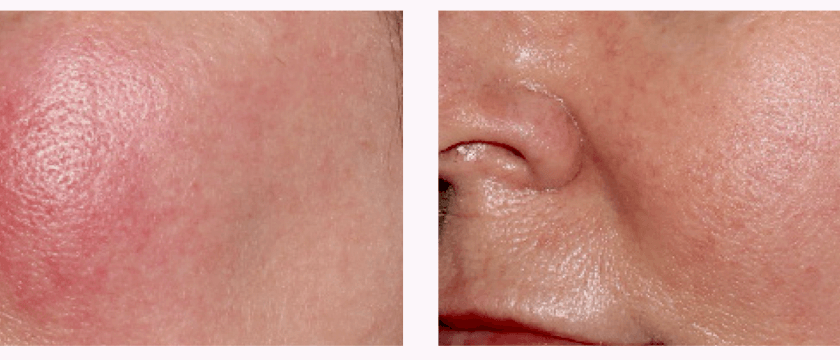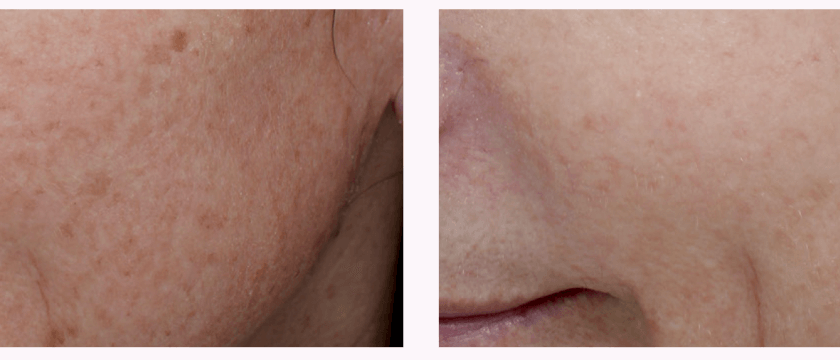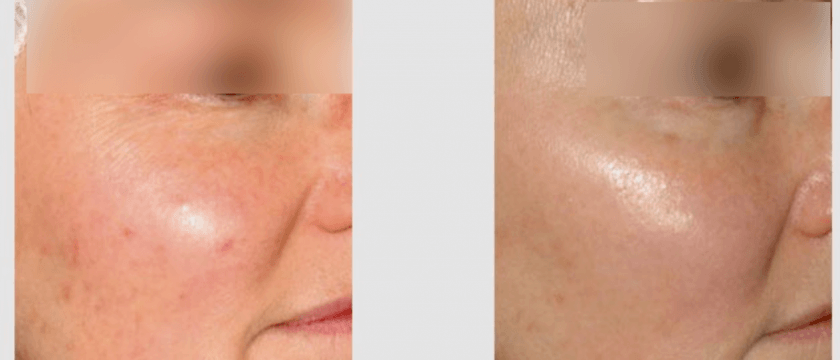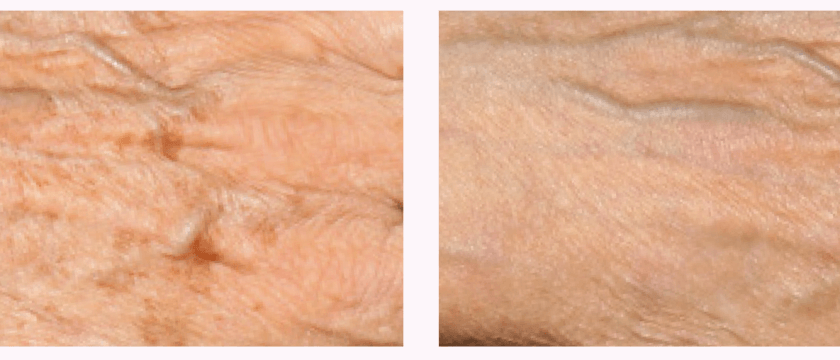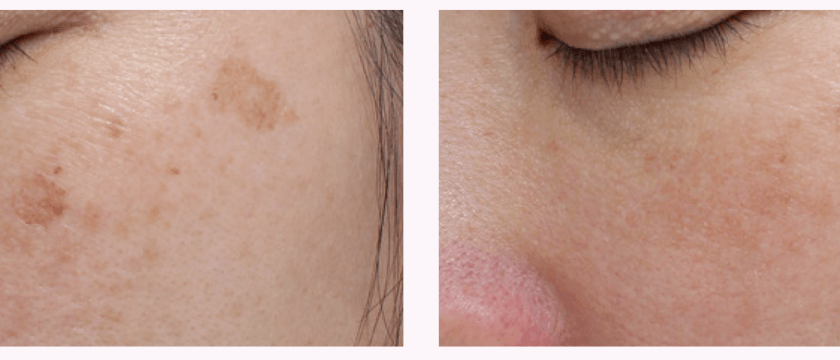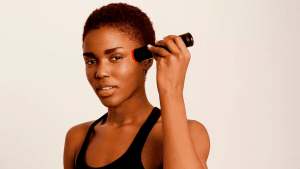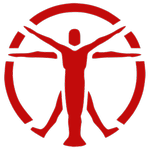Problems with acne and pigmentation are a concern for both teenagers and adults. Also, as you age, your skin becomes loose and lacks elasticity.
For many, home treatments do little to improve skin conditions. So if you think antibiotics and surgeries are your only options left, it might be time to consider broadband light therapy.
This article will answer all of your questions about broadband light therapy, including what it is, how it works, what to expect from the treatment, and how safe it is. You will also learn about the effectiveness of this method and whether or not it is the right treatment for you.
What is broadband light therapy and how does it work?
BBL focuses on targeted areas where heat is absorbed to stimulate skin cell renewal and regenerate new collagen growth. The light energy also eliminates the small vessels that cause redness and reduces the amount of unnecessary melanin that induces melasma (also known as hyperpigmentation). In addition, broadband light, due to its multiple lengths, is used for the treatment of acne. It reduces inflammation and post-inflammatory marks left by current and old pimples and reduces acne scarring.
Although BBL heats the skin, it does not burn. The device uses advanced cooling features so that patients can receive treatment with minimal discomfort.

What conditions can be treated with broadband light?
Broadband light therapy is a relatively new treatment option, but it has quickly become a popular choice for those looking to improve their appearance. It is safe, effective, and can be used to treat a number of different conditions.
Below we have listed the most common problems that are addressed by this type of treatment.
- Wrinkles
Wrinkles are a natural part of aging, but that doesn’t mean you have to accept them. It is one of the most common reasons people seek out this treatment.
Broadband light therapy can help to reverse some of the effects of sun damage by stimulating the production of collagen and elastin, two proteins that keep your skin looking young and healthy.
- Acne
Acne is a common skin condition that affects people of all ages. It is characterized by the appearance of pimples, blackheads, and whiteheads. It occurs when the pores of your skin become blocked, trapping oil and bacteria inside. This can lead to inflammation and the formation of pimples.
Broadband light therapy can help to clear up acne by destroying the bacteria that cause it and reducing inflammation. It can also stimulate the production of collagen, helping to heal the skin and prevent scarring.
- Rosacea
Rosacea is a chronic condition that causes redness, inflammation, and pimples on the face. It is often mistaken for acne, but it is a different condition entirely. Rosacea affects millions of people worldwide and can be difficult to treat.
Broadband light therapy help to reduce the redness and inflammation associated with rosacea, giving you back your confidence.

- Brown spots
Brown spots, also known as age spots, are a common sign of aging. They occur when the skin is exposed to too much sun, causing the production of melanin, a dark pigment, to increase.
Broadband light therapy can help to fade brown spots by breaking down melanin and stimulating the production of collagen and elastin.
Is broadband light the same as IPL?
Broadband light and intense pulsed light (IPL) are both effective treatments for a variety of skin concerns, including sun damage, fine lines and wrinkles, age spots, and more. They work by delivering high-intensity light energy to the skin, which helps to boost collagen production and improve the overall appearance of the skin. However, there are some key differences between these two treatments.
First of all, the difference lies in the name. IPL uses a single focused beam of light (intense), while BBL uses multiple wavelengths of light (broadband). IPL is better suited for precisely a very targeted area, while BBL is often used for treating a wider range of skin.
Another important fact is that BBL is the only scientific treatment for skin rejuvenation at the molecular level [1]. This method showed changes in genes associated with aging and longevity. Therefore, BBL is a functional rejuvenation (at least in the short term) and not just a cosmetic skin improvement procedure.
Additionally, broadband light is generally considered to be safer and more effective than IPL. Initial impulse treatments were generally not recommended for patients with darker skin tones as they may cause hyperpigmentation (dark spots) or hypopigmentation (light spots). On the other hand, BBL is a highly controlled treatment that avoids unwanted side effects and can therefore be used on dark skin as well.
The science behind broadband light therapy
Broadband light therapy is a relatively new treatment for a variety of skin conditions. While the mechanisms by which it works are still being studied, there is evidence that this therapy can be effective in treating certain skin conditions.
Below, we’ll take a look at some of the science behind broadband light therapy and how it may be used to improve the appearance of your skin.
A study [2] was conducted to evaluate three BBL treatment regimens for skin tightening. 27 patients were divided into groups: 1. 800 nm filter using static technique and 695 nm filter using constant motion technique; 2. 800 nm filter using the constant motion method and 3. 590 nm filter using also the constant motion method. There were three sessions of BBL treatment in total.
As a result, patients of all groups showed a marked improvement in the area of zygomatic wrinkles and nasolabial folds. Besides, in patients of the 3rd group, an improvement in skin tone and texture was observed.

The next study [3] is investigating the efficacy and tolerability of broadband infrared light therapy in patients with facial wrinkles and sagging. For this, 29 patients were selected to receive treatment at one-month intervals up to 5 times. As a result, 21% of patients had a marked improvement, 30% — had a moderate, and 28% — had a slight reduction in wrinkles at the corners of the eyes. None of the patients showed hyperpigmentation or scarring after treatment.
Broadband light also has a positive effect on acne treatment. Early intervention in inflammatory lesions reduces the risk of post-acne, erythema, and scarring.
In the study [4], two patients received treatment that included treatment with 420-590 nm. One month after the last procedure, both patients showed a marked reduction in acne inflammation and erythema. The overall tone and texture of the skin have also improved.

Before and after results
Broadband light therapy is an excellent way to improve your appearance and confidence. Below are some examples of patients who have undergone treatment with broadband light therapy.
Many people who have broadband light therapy report that their skin feels softer and smoother, their pores appear smaller, and their complexion looks more even and radiant. Broadband light therapy can also help reduce the appearance of fine lines and wrinkles and improve your skin’s overall tone and texture.
What to expect from broadband treatment
BBL treatments are typically performed in a series of sessions, spaced a few weeks apart. Each session usually lasts between 15 and 30 minutes, depending on the treated area. Most people see noticeable improvement after 3-5 sessions, but additional treatments may be needed to maintain results.
Below we will consider how to prepare for the treatment, what to expect from the procedure, and aftercare tips.
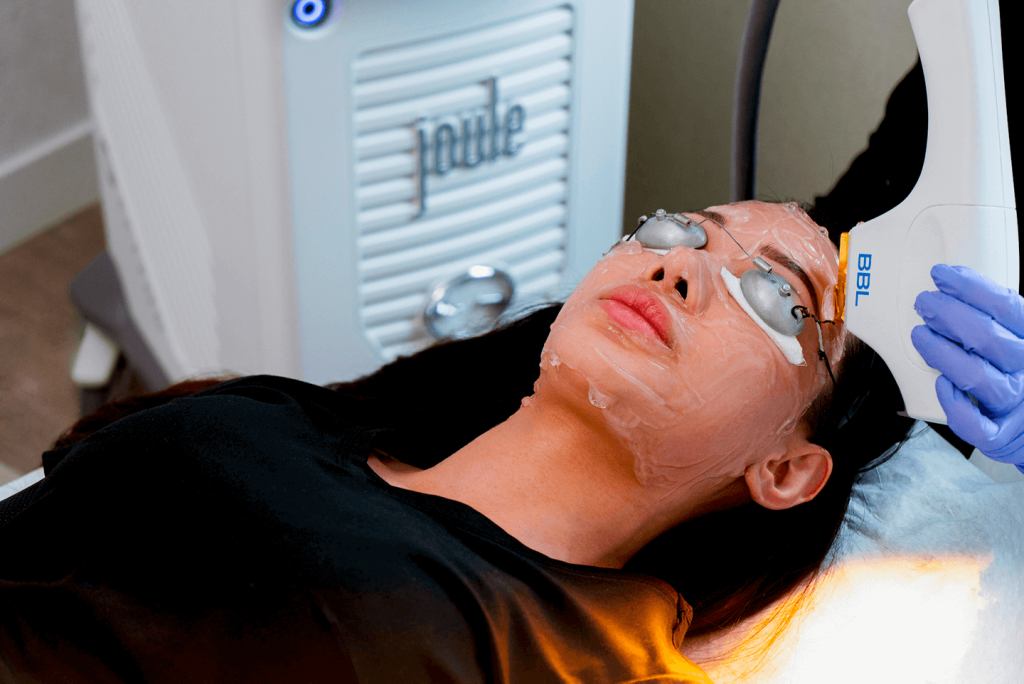
How should you prepare for treatment
Broadband light therapy is a non-invasive procedure that can be done in a doctor’s office. No anesthesia is required, and the procedure itself is relatively short, taking only about 30 minutes from start to finish.
Before treatment, your doctor will conduct a thorough consultation to ensure that broadband light therapy is right for you. They will also assess your skin type and condition to determine the best settings for your treatment.
We also advise taking a few steps and precautions before treating BBL to minimize the risk of downtime and complications and improve results. This includes:
- Avoid active sun exposure for 4 weeks before treatment;
- Do not use fake tan for at least 2 weeks;
- Daily use of sunscreen (preferably SPF 50);
- Avoid using any medications or products that can make your skin more sensitive to light;
- Use a cosmeceutical product with an inhibitor if you are treating pigmentation. This will help improve the result and prevent further development of this condition after the course of treatment.
Broadband light therapy session
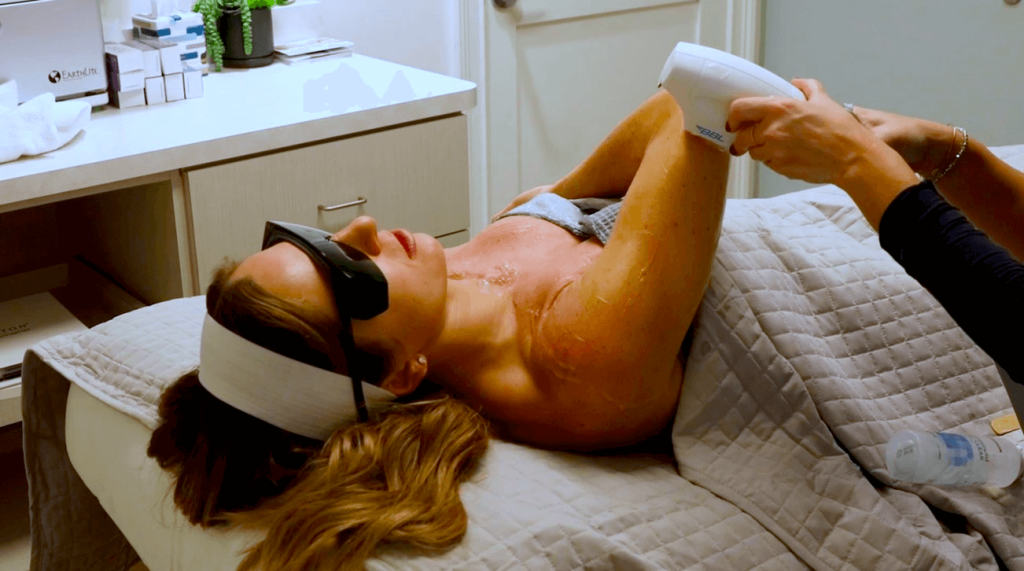
During treatment, you will be seated in a chair or laid on a couch and asked to wear protective eyewear. Your doctor will then apply a cooling gel to the treatment area and move a handheld device over your skin.
You may experience a mild tingling sensation as the light energy is absorbed by your skin. Most people tolerate treatment well and don’t experience any significant discomfort.
Your skin tone will become more even within two weeks after the first treatment. It should also be smoother, with less visible fine lines and pores.
The number of initial treatments required for optimal results varies and will depend on the condition of the skin. For example, if you have rosacea and sun damage, which are more difficult to treat, you may need additional treatments.
Recovery and aftercare tips
Immediately after treatment, you may notice that the treated area is red and swollen. This is a normal reaction and should subside within a few hours. You may also experience some crusting or flaking of the skin, which will eventually go away.
Downtime is minimal after BBL treatment, but there are steps that are needed to achieve results and decrease any complications. The skin will feel sensitive and almost like a sunburn. Until this passes, avoid the following:
- Applying makeup to treated areas;
- Using scented lotions or soaps, deodorants, and skincare active ingredients such as retinol and glycolic acid;
- Heating the skin for 24 hours — no hot showers, saunas, steam baths, or exercise;
- Picking or scratching at treated skin;
- Exposing treated skin to sunlight or other sources of ultraviolet (UV) light.

What are the pros and cons of broadband light treatment?
To see if this therapy is right for you, let’s take a look at its pros and cons.
Pros
- Broadband light energy has been clinically proven to be effective in treating a wide range of skin conditions and increasing the production of new collagen, which over time helps rebuild your skin’s structure and firmness on a cellular level.
- The procedures are relatively fast. BBL can treat the face and large areas of the body in 15-30 minutes.
- It is painless due to the cooling mechanism that prevents overheating of the skin.
- Broadband light downtime is minimal, with redness and flaking for around 4 days.
- The procedure can be performed on any part of the body, as well as for any type of skin, unlike IPL.
Cons
- As with any phototherapy therapy procedure, broadband light cannot be used on people who have medical conditions associated with light sensitivity, or who have a history of skin cancer.
- Broadband therapy procedures should be carried out in a specialized clinic, which can take a long time.
Is broadband light safe?

Broadband light therapy is -cleared and has been shown to be an effective treatment for a variety of skin conditions. When administered by a qualified provider, side effects are rare and typically mild.
The most common side effect of broadband light therapy is temporary redness and swelling of the treated area. This typically resolves within a few hours after treatment. Other potential side effects include itching, blistering, and crusting.
Summary
Over the past decade, light therapy has become a widely accepted and trusted treatment for the skin.
Broadband light (BBL) is the latest and most advanced light therapy technology that sets the standard for treating aging-related skin conditions and pigmentation disorders with minimal downtime and long-term benefits. Also, extensive research has proven that regular BBL treatments not only prevent cellular aging but also reverse the clock, causing the DNA of skin cells to return to a young and healthy state.
Depending on the desired results, therapy is usually given as a series of 3-6 treatments and is maintained at two to three treatments per year for optimal results.
FAQ
🔍 What is broadband light therapy?
Broadband light therapy is a type of phototherapy that uses a wide frequency range of techniques to treat various skin conditions. It can be used to improve the appearance of wrinkles, age spots, and other signs of aging. It can also be used to treat acne and other skin conditions.
🧐 How does broadband light therapy work?
Broadband light therapy works by targeting specific skin cells with specific wavelengths of light. The light energy is absorbed by the cells, which then triggers a reaction that can lead to the production of new collagen or the destruction of the unwanted cells.
❓ What are the side effects of broadband light therapy?
The most common side effect of broadband light therapy is temporary redness and swelling of the treated area. Other potential side effects include itching, blistering, and bruising. Most side effects are mild and resolve on their own within a few days.
🤓 Is broadband light therapy safe?
Broadband light therapy is generally considered safe when it is performed by a trained and experienced technician. However, as with any medical procedure, there are some risks involved. These risks can include burns, eye damage, and skin cancer. Be sure to discuss any concerns you have with your doctor before you undergo treatment.
Sources
- Anne Lynn S Chang, Patrick H Bitter, Kun Qu, Meihong Lin, Nicole A Rapicavoli, and Howard Y Chang. Rejuvenation of Gene Expression Pattern of Aged Human Skin by Broadband Light Treatment: A Pilot Study. — J Invest Dermatol. 2013 Feb; 133(2): 394–402. Published online 2012 Aug 30. doi: 10.1038/jid.2012.287
- Seunggyun In, Henry Park, Heejin Song, Jiho Park, Heesu Kim, Sung Bin Cho. Broadband light treatment using static operation and constant motion techniques for skin tightening in Asian patients. — J Cosmet Laser Ther. 2019;21(3):132-137. doi: 10.1080/14764172.2018.1481511. E-pub 2018 Jun 8.
- Ayaka Hirao, Ryoko Morita and Akira Kawada. Clinical Effectiveness of Broad-band Infrared Light Therapy for Wrinkles and Skin Laxity of the Face. — Research Article – (2014) Volume 5, Issue 5.
- Yuko Ito and Sung Bin Ch. Modified 3-Step Broadband Light Treatment for Inflammatory Acne Vulgaris and Post-Acne Erythema in Asian Patients. — Med Lasers 2017; 6(2): 102-106.
